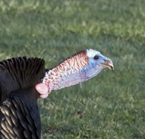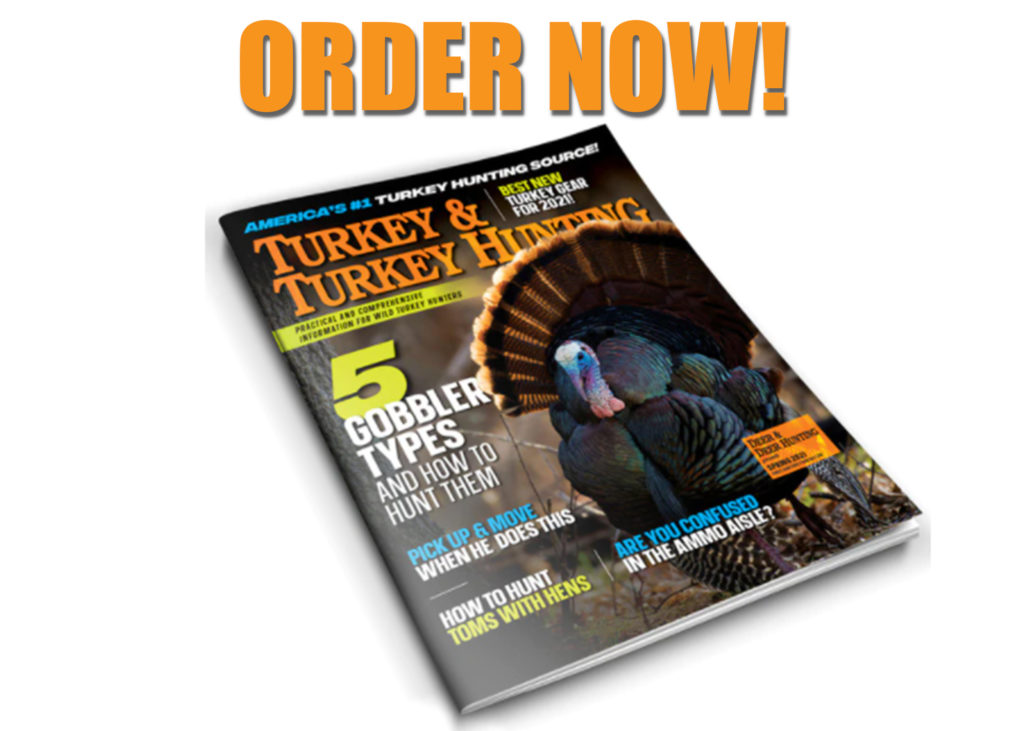Opinions and beliefs about autumn turkeys are wide and varied, which sparks great debate about myths and realities of hunting these great gamebirds.
This is the second part of a two-part article that examines some of the commonly-held myths that abound among fall turkey hunters. Don’t let these fables keep you from getting your bird. Click Here to read Part I.
I’m not into shooting hens or young turkeys
Then don’t. Set your sights on taking a longbeard. The adult males are out there; you just have to find them. And to some, taking a tom is the ultimate experience, far outranking tagging a spring longbeard.
I’ve enjoyed hunts for either-sex turkeys, young and adult, for many years. As sportsmen, we decide what bird to pull the trigger on as fall hunts go. Letting a young hunter take a young fall hen can instill the love of this tradition. If it’s legal, why not?
Fall gobblers don’t strut or gobble
When I hear a deer hunter tell me with astonishment that he heard turkeys gobbling, I have to smile. Welcome to the club.
Those of us who spend a lot of time on October and November ridges occasionally rely on fall gobbling (and other roost calling) to locate turkeys. No, it’s not nearly as consistent as in spring, but it’s not uncommon either.
As for strutting, I’ve seen it in the fall with both sexes. You heard right. Fall gobblers strut. Period. After breaking a turkey flock during one autumn Vermont hunt, my buddies and I called in a strutting adult hen. Doubt it? That’s OK — we have it on film.
So-called “super jakes”— male fall turkeys born two springs ago, but not yet two years of age — seem particularly committed to strutting in autumn. Each November I’ll often find a group somewhere that includes several strutting full-fan gobblers, and a nearby group of adult hens and/or a family flock.
Yes, I realize this is contrary to the typical notion that autumn turkeys exist in perfect flocks consisting of 1) a brood and her charges, 2) gobbler gangs, and 3) broodless flocks, but I’ve witnessed it.

Turkey hunting with a dog that scatters the flock and then comes back to the hunter is a longtime tradition in many states dating back more than 150 years. Nick Dalasio hunts in multiple states each autumn with his dog; they teamed on this bird in New York. (Photo: Nick Dalasio)
Hunting autumn turkeys with dogs is unfair
Using turkey dogs in states where it’s legal offers plenty. Mostly it allows you to find and flush flocks more effectively. But then you have another challenge: How do you hide your canine hunting partner in the blind so that you can call scattered turkeys back?
Training at an early age helps. Still, a dog eager to get close to those turkeys again might have a hard time staying still. In truth, dogs are like hunters. Some are good, and some are a work-in-progress. The ability to use dogs effectively is usually done best by a serious fall turkey hunter. Work on the latter aspect first.
If I could count how many turkey flocks my dogs have busted, which I can’t, then compare it to the birds in those groups I’ve tagged, you’d ask me why I don’t hunt deer more enthusiastically than autumn gobblers and hens. Again, having a canine along for companionship, and then seeing that dog find and flush turkeys, is my first measure of success. Period. Yes, sealing the deal, calling and killing a legal fall bird is what it’s all about. But it’s not everything, and it’s not always easy. Dogs are as fair as any other tool we use.
Why flush turkeys when I can just shoot one?
The idea of flushing fall turkey flocks to gain a tactical advantage is based on the notion you want to call the turkey to your setup after the birds have been scattered. But yeah, if you’ve patterned or happened into fall turkeys — and a bird is in range and you want it — sure, take the shot. You choose.

Do turkeys gobble in autumn and winter? Of course they do, which is one of the biggest myths of turkey hunting.
Often, though, you encounter a flock on the edge of gun range. What do you do then? That’s when you might need to flush them. This strategy is based on the simple fact that turkeys are gregarious and the hope that the flock will want to regroup.
There’s a difference between a good and bad flock flush, as all veteran fall hunters know. In a lousy break, smaller groups of birds stay together. This puts you at a tactical disadvantage. In one done right, turkeys fly off or run in all directions. They’ll want to regroup.
You can set up at that site and try to call one into range. Also, some might suggest this approach is more sporting than simply shooting one that is in range by luck and circumstance.
Spring hunting is just better
It’s tough to argue with a value judgment like this when another turkey hunter makes it. Some waterfowl or deer hunters might say that our time with wild turkeys is misspent no matter what the season.
To me, the spring gobbler hunt offers a range of tactics and intangible pleasures ranging from hearing turkeys on the roost to strutters spitting and drumming as they work toward you. Spring turkey season comes at the end of winter, and calling Maine home base as I do makes those opportunities rank right up there.
But by the end of summer, and months of fishing — a pleasure, not a passion — I’m ready to find some fall turkey flocks. How about you? I’m also a dog guy, so getting out in October and November with my flock-minded English setters adds to the appeal.
As in spring, fall opportunities are many. It’s up to you to choose how you measure your accomplishments. Do you count kills or the October sunrises you enjoy in the turkey woods? Get out there and debunk some of these fall turkey-hunting myths yourself.
Editor’s Note: Steve Hickoff is the author of Fall & Winter Turkey Hunter’s Handbook. For more information on his book visit hickoff.blogspot.com.


